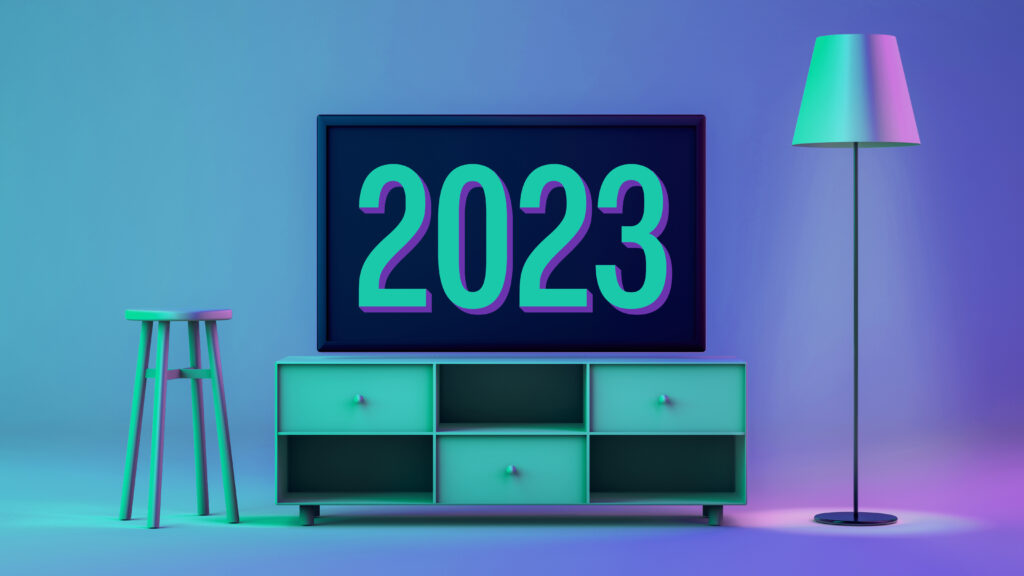10 Best Shopify Sales Channels to Increase Sales
by admin
6 Min Read
CES 2024: Stagwell (STGW) and MNTN Announce Partnership in Unified Performance SolutionsLearn More
Did you think 2022 was big? You ain’t seen nothing yet.

4 Min Read
What a year that was, huh? It was like 2022 was designed to be the ideal year for Connected TV. Streaming services merged and doubled down on premium, must-see content. Netflix—long the anti-ad streamer—and Disney+ rolled out ad-supported offerings. And streaming finally beat cable and broadcast TV in viewership for the first time. Now nearly every major streaming service is a fully measurable, targetable performance marketing avenue.
But if you thought now was the time to catch your breath, think again. The world of CTV advertising is barreling into 2023 at top speed and showing no signs of a slowdown. All eyes are on what’s next as we enter a year of change for marketing, commerce, and advertising.
MNTN’s Ali Haeri, Vice President of Marketing, recently joined eMarketer for their virtual summit, “Attention! Trends and Predictions for 2023.” The summit brought together key decision-makers in advertising, marketing, and media to discuss winning strategies in an uncertain environment.
A recording of the full discussion can be found here—or you can keep reading for a high-level recap of what was discussed.
It didn’t take long before the eMarketer host brought up a topic on every marketer’s mind right now—the economy. “With economic anxiety looming over marketing teams, spending is being reigned in, ad dollars are being reallocated, and budgets and their returns are under a microscope,” the host pointed out. She asked Haeri how he sees advertisers navigating these challenges in 2023.
Haeri noted that while instinctively cutting back on advertising might be the easiest and quickest thing to do if you’re looking to save money, history shows us that it’s better to keep your foot on the ad spend pedal. Speaking of the 2008 recession, Haeri noted that research showed that companies that sustained advertising succeeded and widened the gap from their competitors. “So when COVID hit, people took those findings from the recession [and applied them]. You saw fewer advertisers reflexively cut their advertising spend and rather hit the accelerator.” Best of all, those applied lessons paid off—and quickly. “These brands succeeded,” said Haeri. “There was a quick rebound—we anticipated a lot more hurt. Haeri noted that at MNTN the teams get a unique insight into spending patterns for this uncertain time – and brands are spending more than ever. “I completely understand marketers feeling the pressure,” sympathized Haeri, “but now is not the time to cut, now’s the time to—at a minimum—sustain ad spend.”
Following the last question, the host brought up Netflix and Disney+ officially entering the ad-supported streaming landscape. “They’re big names, but they’re not stepping onto an empty field,” the host noted before turning to Haeri for additional input on this seismic shift in the streaming landscape.
“I think it’s a net positive for advertisers,” replied Haeri. “It’s going to represent a lot more inventory than what you’re already seeing.” He noted that while CTV has seen explosive growth this year, it’s still relatively constrained when compared to the volume of inventory in other digital channels. “Knowing that there is more inventory out there is only going to benefit performance marketers who are looking for new channels because they’re likely tapped out on all the ‘greatest hits’ performance marketing channels they’ve already been using. Haeri noted that these two major players bringing their sizable audiences make CTV even more attractive for advertisers—as well as the channel’s high completion rates. “We see on our platform 98% or higher completion rates—that’s something you don’t see on other video ads you might run across the web.”
Emarketer’s host next asked about ad fatigue, and if booming inventory and ad-supported offerings mean that creative needs to be updated more frequently—or on a platform-by-platform basis.
“This is something that’s really important to us,” said Haeri. He noted that while MNTN identifies as a technology platform, creative is a high priority—which is why MNTN acquired QuickFrame by MNTN and Ryan Reynolds’ creative agency, Maximum Effort. “Ad fatigue is real,” admitted Haeri. “And it’s bad for both consumers and advertisers. I’ve seen some advertisers say they want their ads shown as much as possible, but it never works out positively for them. Consumers develop a growing contempt when they see the same ad every few minutes—sometimes even consecutively.” Haeri noted that studies show creative should be cycled out at least quarterly. “CTV is programmatic and advertisers should take advantage of the fact that they can run ads against very specific audiences. So should you be thinking about creative on a platform-by-platform basis? I’d think about it more on an audience-by-audience basis,” said Haeri. “Just simple variations of creative, created for specific audiences, will serve everyone well.”
Haeri and the panel had a lot more topics to cover and unique insights to share as decision-makers in advertising, marketing, and media. Click here to watch the full recording.